Abstract
Under secondary metabolic conditions the white rot basidiomycete Phanerochaete chrysosporium mineralizes 2,4-dichlorophenol (I). The pathway for the degradation of 2,4-dichlorophenol (I) was elucidated by the characterization of fungal metabolites and of oxidation products generated by purified lignin peroxidase and manganese peroxidase. The multistep pathway involves the oxidative dechlorination of 2,4-dichlorophenol (I) to yield 1,2,4,5-tetrahydroxybenzene (VIII). The intermediate 1,2,4,5-tetrahydroxybenzene (VIII) is ring cleaved to produce, after subsequent oxidation, malonic acid. In the first step of the pathway, 2,4-dichlorophenol (I) is oxidized to 2-chloro-1,4-benzoquinone (II) by either manganese peroxidase or lignin peroxidase. 2-Chloro-1,4-benzoquinone (II) is then reduced to 2-chloro-1,4-hydroquinone (III), and the latter is methylated to form the lignin peroxidase substrate 2-chloro-1,4-dimethoxybenzene (IV). 2-Chloro-1,4-dimethoxybenzene (IV) is oxidized by lignin peroxidase to generate 2,5-dimethoxy-1,4-benzoquinone (V), which is reduced to 2,5-dimethoxy-1,4-hydroquinone (VI). 2,5-Dimethoxy-1,4-hydroquinone (VI) is oxidized by either peroxidase to generate 2,5-dihydroxy-1,4-benzoquinone (VII) which is reduced to form the tetrahydroxy intermediate 1,2,4,5-tetrahydroxybenzene (VIII). In this pathway, the substrate is oxidatively dechlorinated by lignin peroxidase or manganese peroxidase in a reaction which produces a p-quinone. The p-quinone intermediate is then recycled by reduction and methylation reactions to regenerate an intermediate which is again a substrate for peroxidase-catalyzed oxidative dechlorination. This unique pathway apparently results in the removal of both chlorine atoms before ring cleavage occurs.
Full text
PDF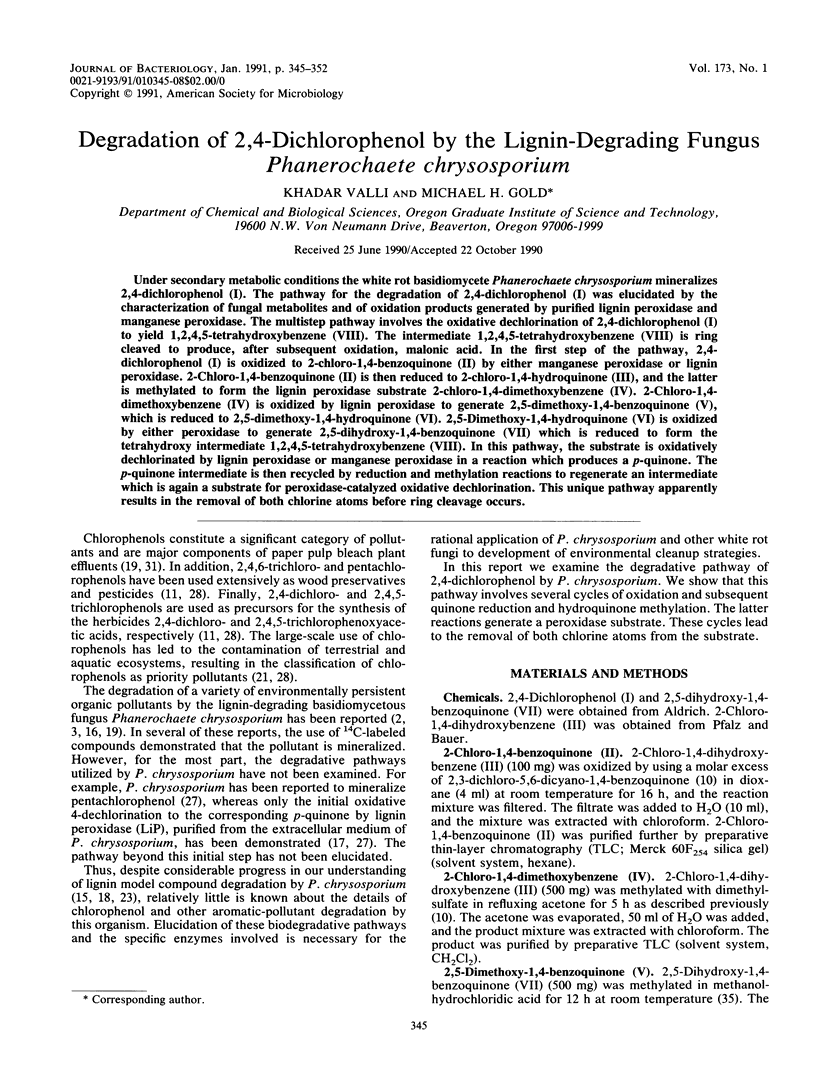
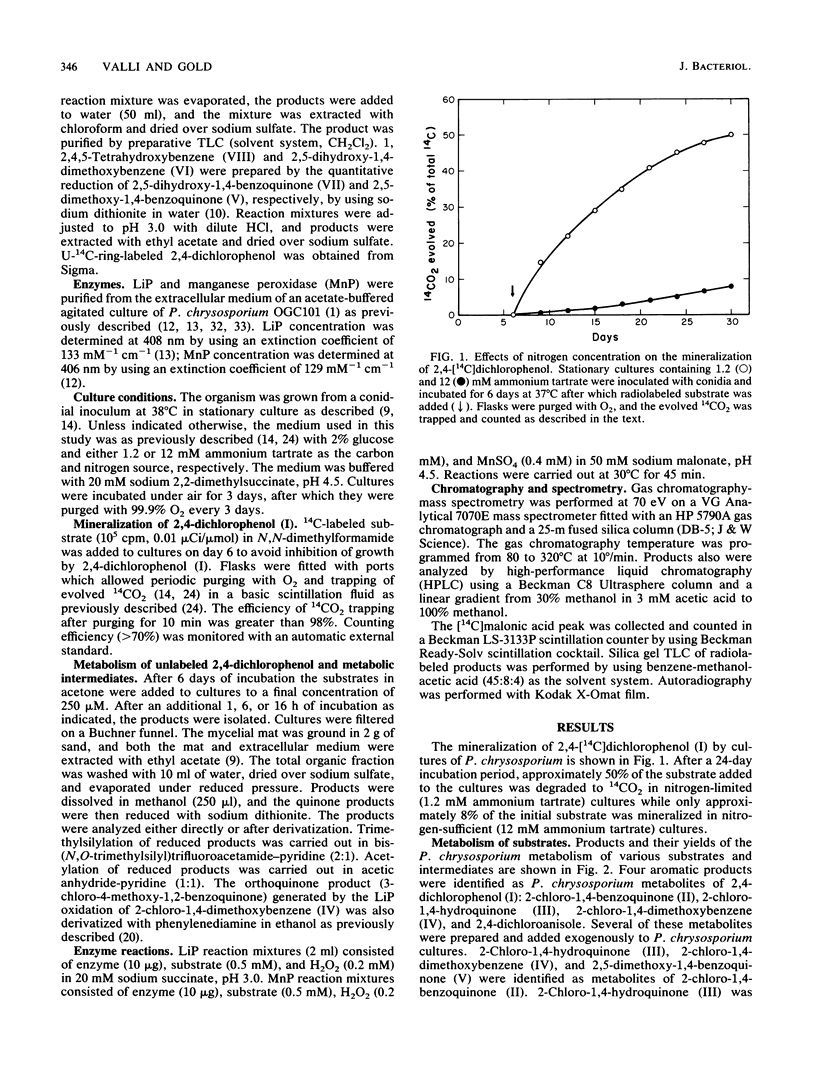
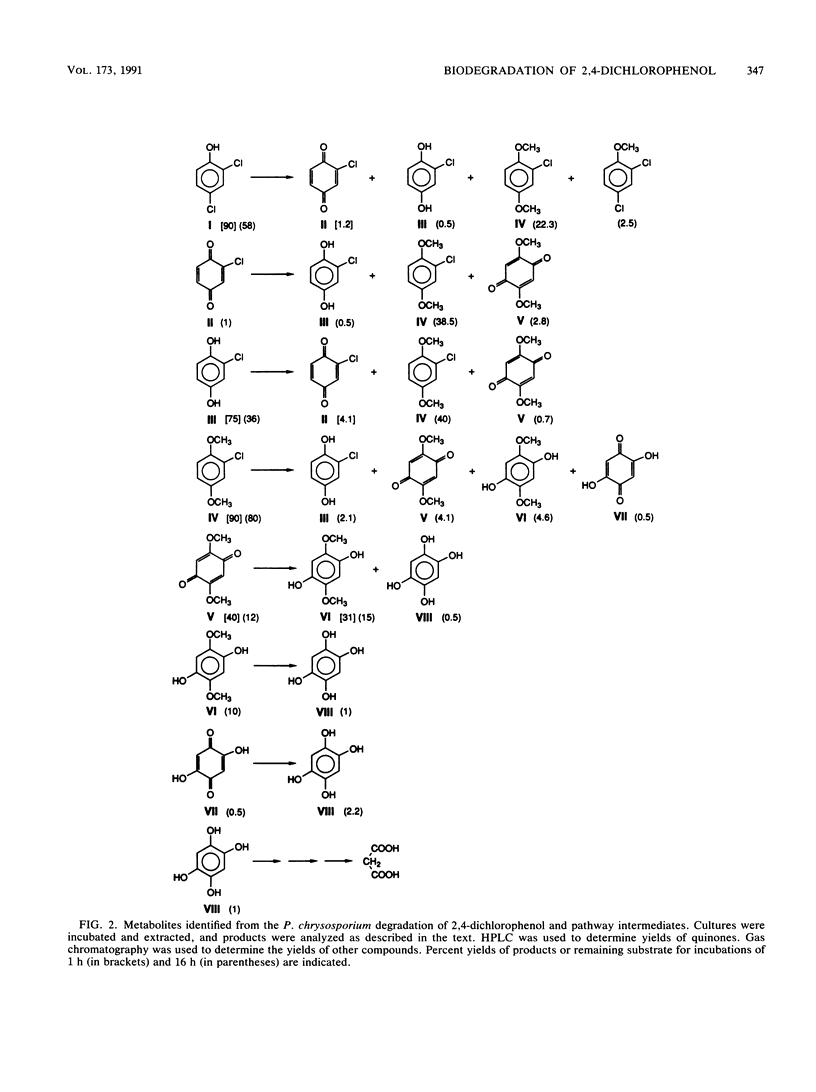
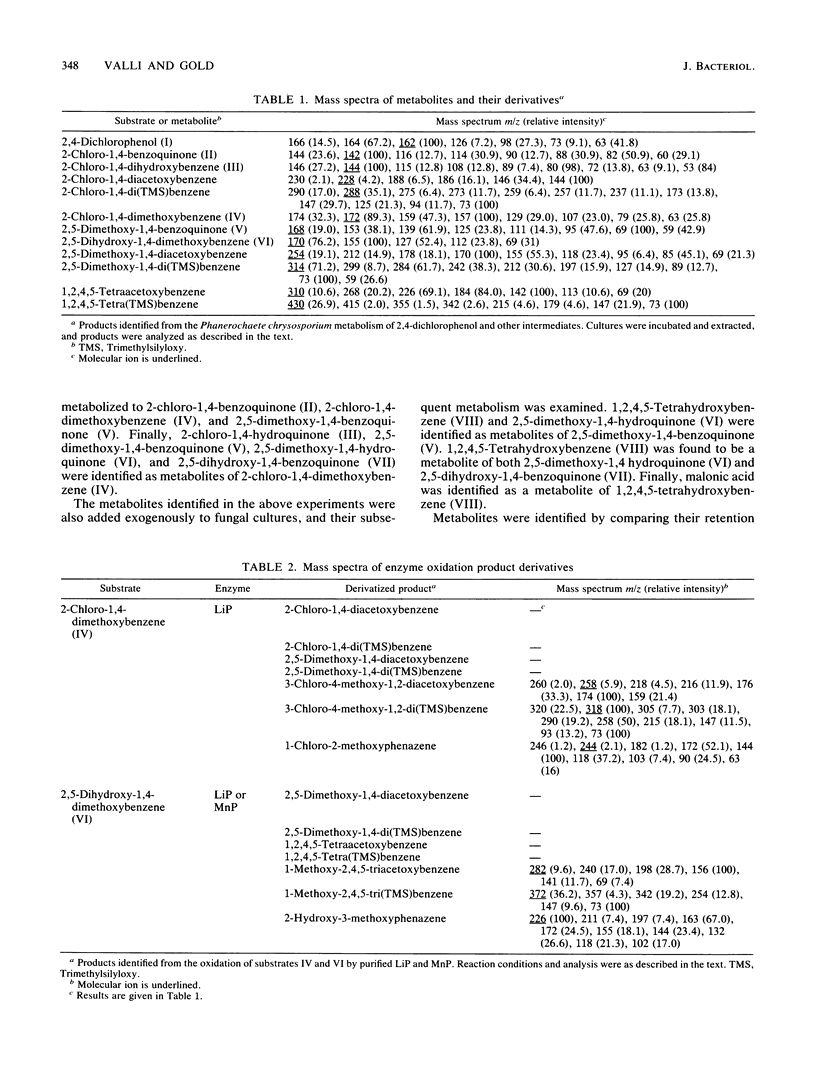
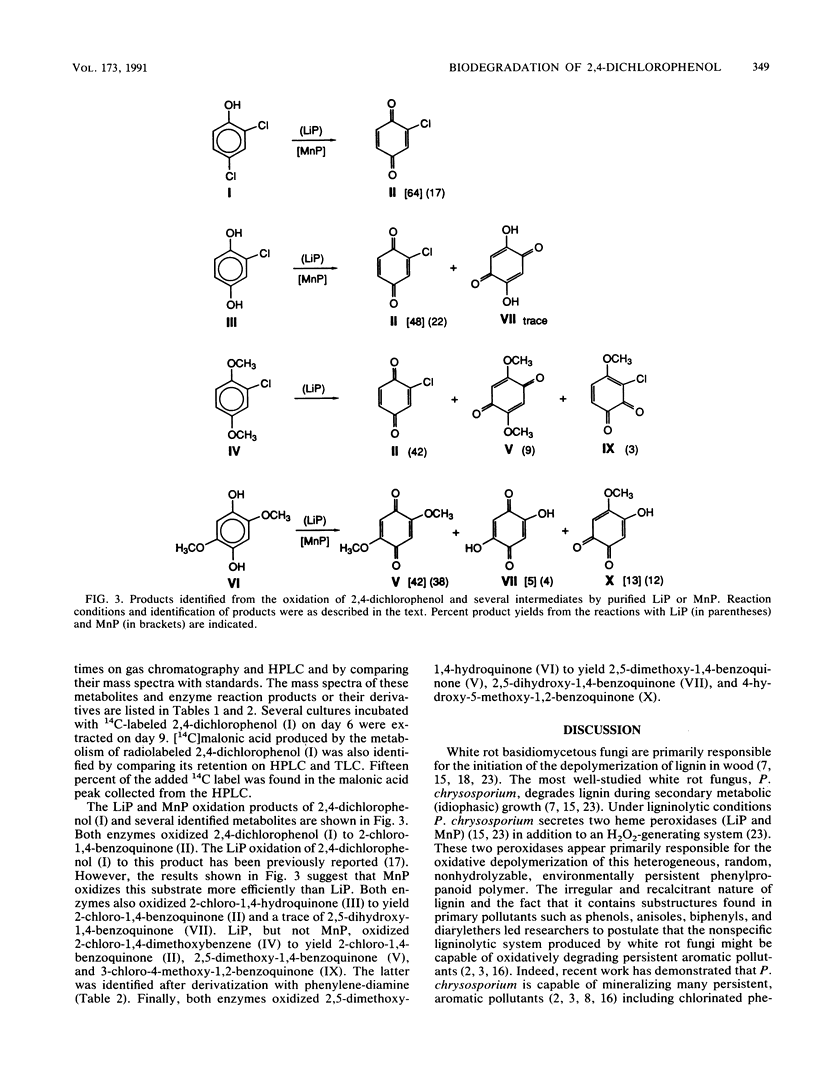
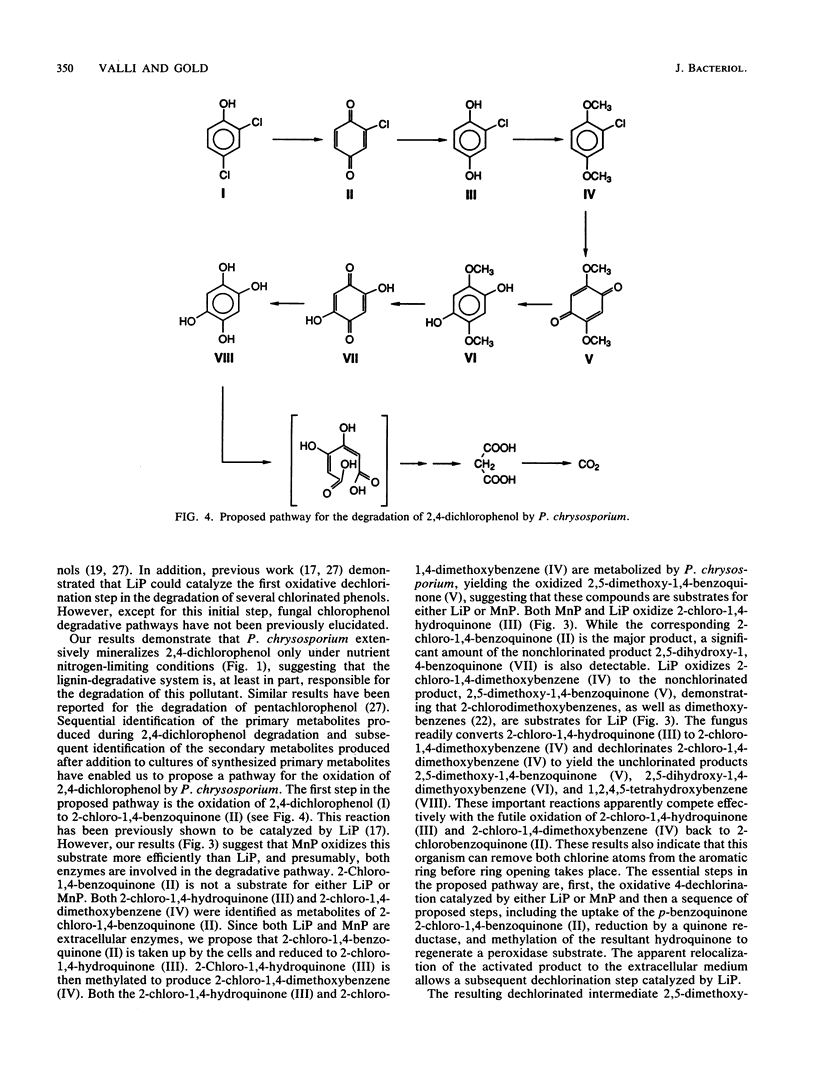
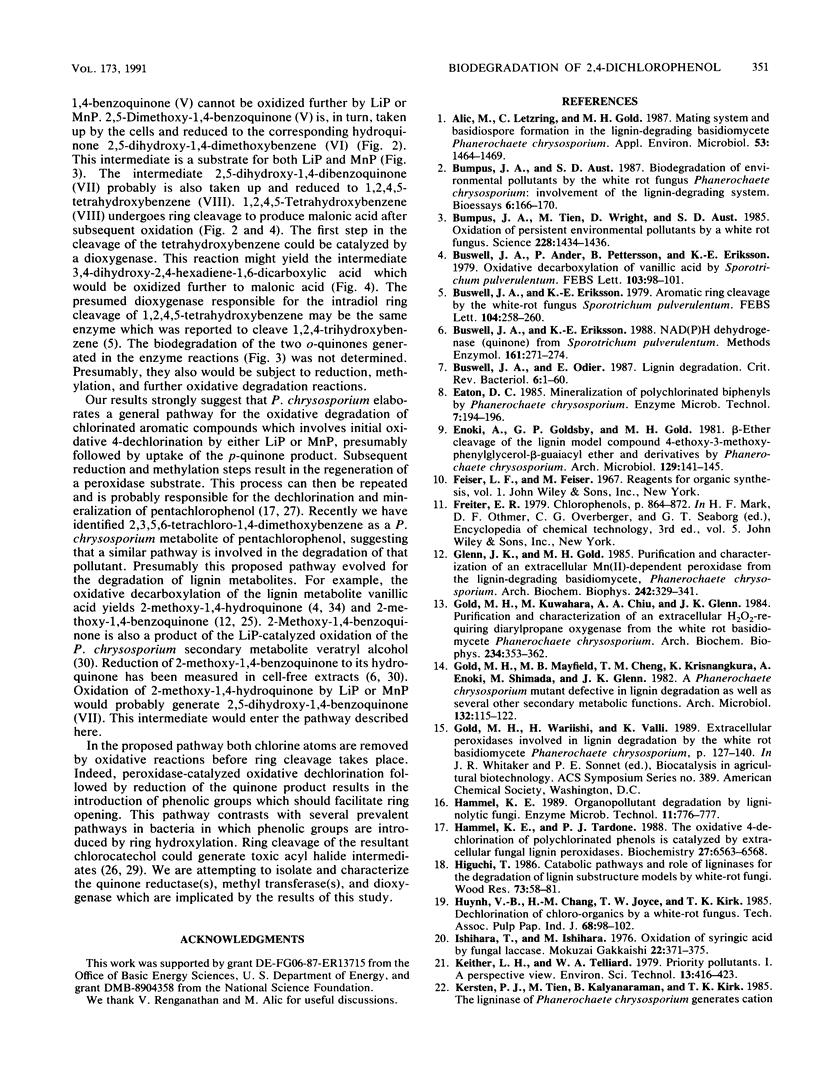
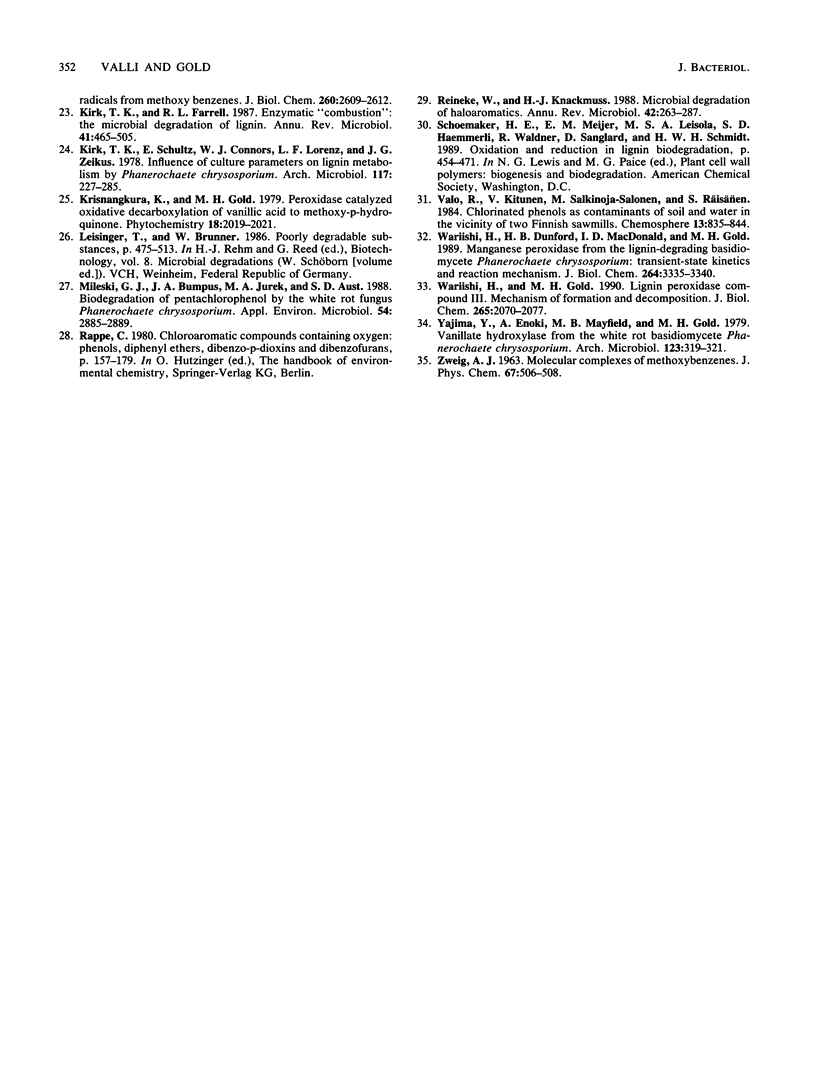
Selected References
These references are in PubMed. This may not be the complete list of references from this article.
- Alic M., Letzring C., Gold M. H. Mating System and Basidiospore Formation in the Lignin-Degrading Basidiomycete Phanerochaete chrysosporium. Appl Environ Microbiol. 1987 Jul;53(7):1464–1469. doi: 10.1128/aem.53.7.1464-1469.1987. [DOI] [PMC free article] [PubMed] [Google Scholar]
- Bumpus J. A., Tien M., Wright D., Aust S. D. Oxidation of persistent environmental pollutants by a white rot fungus. Science. 1985 Jun 21;228(4706):1434–1436. doi: 10.1126/science.3925550. [DOI] [PubMed] [Google Scholar]
- Buswell J. A., Ander P., Pettersson B., Eriksson K. E. Oxidative decarboxylation of vanillic acid by Sporotrichum pulverulentum. FEBS Lett. 1979 Jul 1;103(1):98–101. doi: 10.1016/0014-5793(79)81258-2. [DOI] [PubMed] [Google Scholar]
- Buswell J. A., Eriksson K. E. NAD(P)H dehydrogenase (quinone) from Sporotrichum pulverulentum. Methods Enzymol. 1988;161:271–274. doi: 10.1016/0076-6879(88)61029-9. [DOI] [PubMed] [Google Scholar]
- Glenn J. K., Gold M. H. Purification and characterization of an extracellular Mn(II)-dependent peroxidase from the lignin-degrading basidiomycete, Phanerochaete chrysosporium. Arch Biochem Biophys. 1985 Nov 1;242(2):329–341. doi: 10.1016/0003-9861(85)90217-6. [DOI] [PubMed] [Google Scholar]
- Gold M. H., Kuwahara M., Chiu A. A., Glenn J. K. Purification and characterization of an extracellular H2O2-requiring diarylpropane oxygenase from the white rot basidiomycete, Phanerochaete chrysosporium. Arch Biochem Biophys. 1984 Nov 1;234(2):353–362. doi: 10.1016/0003-9861(84)90280-7. [DOI] [PubMed] [Google Scholar]
- Kersten P. J., Tien M., Kalyanaraman B., Kirk T. K. The ligninase of Phanerochaete chrysosporium generates cation radicals from methoxybenzenes. J Biol Chem. 1985 Mar 10;260(5):2609–2612. [PubMed] [Google Scholar]
- Kirk T. K., Farrell R. L. Enzymatic "combustion": the microbial degradation of lignin. Annu Rev Microbiol. 1987;41:465–505. doi: 10.1146/annurev.mi.41.100187.002341. [DOI] [PubMed] [Google Scholar]
- Mileski G. J., Bumpus J. A., Jurek M. A., Aust S. D. Biodegradation of pentachlorophenol by the white rot fungus Phanerochaete chrysosporium. Appl Environ Microbiol. 1988 Dec;54(12):2885–2889. doi: 10.1128/aem.54.12.2885-2889.1988. [DOI] [PMC free article] [PubMed] [Google Scholar]
- Reineke W., Knackmuss H. J. Microbial degradation of haloaromatics. Annu Rev Microbiol. 1988;42:263–287. doi: 10.1146/annurev.mi.42.100188.001403. [DOI] [PubMed] [Google Scholar]
- Wariishi H., Dunford H. B., MacDonald I. D., Gold M. H. Manganese peroxidase from the lignin-degrading basidiomycete Phanerochaete chrysosporium. Transient state kinetics and reaction mechanism. J Biol Chem. 1989 Feb 25;264(6):3335–3340. [PubMed] [Google Scholar]
- Wariishi H., Gold M. H. Lignin peroxidase compound III. Mechanism of formation and decomposition. J Biol Chem. 1990 Feb 5;265(4):2070–2077. [PubMed] [Google Scholar]
- Zemper E. D., Black S. H. Morphology of freeze-etched Treponema refringens (Nichols). Arch Microbiol. 1978 Jun 26;117(3):227–238. doi: 10.1007/BF00738540. [DOI] [PubMed] [Google Scholar]


